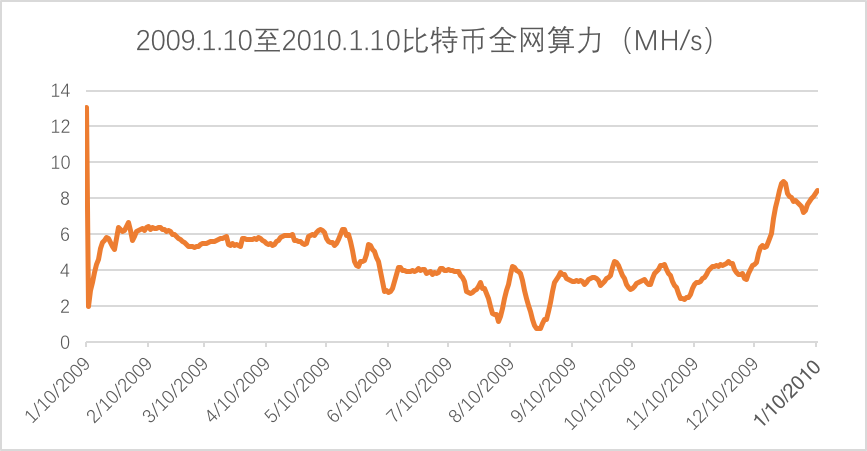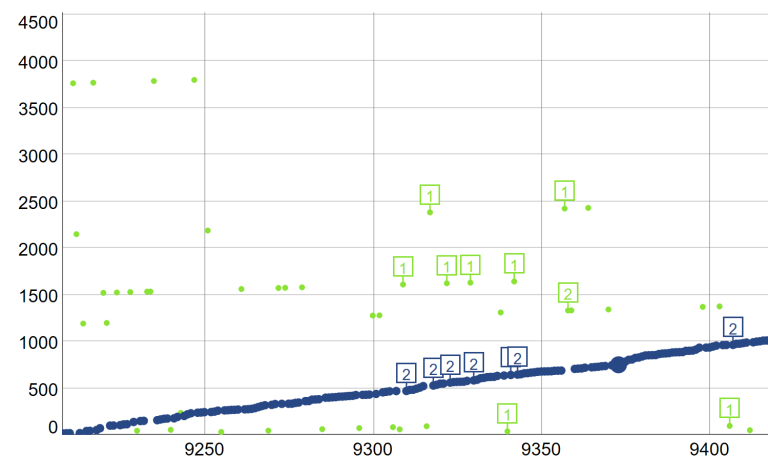How much BTC does Satoshi Nakamoto have, and where are they placed?
Original, source: Chain.info
How much BTC does Satoshi Nakamoto have?
This question may seem simple, but to this day no conclusion has been reached. Although discussions about Bitcoin were limited to a small circle of crypto punks before mid-2010, Satoshi Nakamoto made the Bitcoin client available for download shortly after the genesis block was generated. According to Hal Finney, he joined mining when the block height was more than 70, and some early Bitcoin participants also announced evidence of joining mining before 2010. Until Satoshi Nakamoto's identity mystery is not solved, all related guesses will not be confirmed or explicitly falsified, but the data on the chain will give us an answer that may be very close to the truth.
"Archaeological" work
Bitcoin's genesis block was born on January 3, 2009. Then on January 9, the first version of Bitcoin v0.1 was released, welcoming the first users including Hal Finney. In the Bitcoin protocol, the minimum difficulty is set to 1, which is also the initial setting of the protocol. After running for almost a year on the minimum difficulty, on December 30, 2009, the Bitcoin network ushered in the first difficulty increase. At a block height of 32256, Bitcoin difficulty rose for the first time from 1 to 1.18. Since then, the difficulty has risen more and less. A difficulty of 1 means that if you want to maintain a block interval of 10 minutes in the network, you need about 7.15MH / s of hash power. Chain.info's historical data on Bitcoin hashpower also confirms this. The real-time status of Bitcoin shows that the hashrate of the entire network at 606,742 hours (December 5, 2019) is about 101 EH / s, which is more than ten trillion times more than a decade ago.

- US Treasury Secretary: Fed will not issue digital currency in five years, and does not oppose Facebook to create digital currency
- The era of digital currencies is getting closer: starting with cash in circulation and used in small retail scenarios
- Research report: Bitcoin software version changes in 7 years, where is the biggest change?

Data source: Chain.info
As mentioned above, a difficulty of 1 does not mean that the blocks in 2009 came from Satoshi Nakamoto. Although a trading market where Bitcoin can be traded appeared in July 2010, it cannot be ruled out that early miners have always kept these Bitcoins, so we cannot judge by the transfer situation. Given the entire network computing power in 2009 (less than 7.15MH / s), these early miners will not have many blocks with them, but this will cause a lot of interference in estimating which blocks come from Satoshi Nakamoto.
Bitcoin's coinbase has only an address and no name. In fact, according to the public information, the only address that can be determined to belong to Satoshi Nakamoto may only be a block address with a block height of 9 because the address sent Hal Finney 10BTC at the block height of 12 (while the Genesis Block's The 50BTC block reward is not included in the UTXO set, so it cannot actually be used). This is also the first transfer in Bitcoin history.
So how do we distinguish Satoshi Nakamoto from other early miners?
Researcher Sergio Demián Lerner published a series of articles between 2013 and 2014, identifying the blocks mined by Satoshi Nakamoto by the characteristics of the data contained in the blocks. Its main basis is the regular change of ExtraNonce in coinbase transfers, the law of Nonce and the timestamp. ExtraNonce is a parameter that provides extra entropy to the node when the Nonce exhaustion overflow of the mining node is convenient for restarting the search. This parameter is in coinbase, but is not part of the protocol standard, and is recorded locally by each node. ExtraNonce will not return to zero after successful block generation, but will accumulate with the number of uses. Therefore, in the case of fewer early participating nodes and relatively dense node production, the ExtraNonce of the same node will show a regular linear growth. ExtraNonce will not normally reset unless the node is restarted.
By summarizing ExtraNonce in Bitcoin blocks from 2009 to 2010, Lerner found that some blocks have a lot in common with this parameter:
1. Since ExtraNonce will accumulate with Nonce overflow, and the node will be reset to zero when the node is shut down or restarted, it is equivalent to the node's block counter, and will be reset regularly as the node's regular backup restarts. In the first two years, ExtraNonce with a series of blocks showed a distinctive regularity, and the slopes of the first few blocks were consistent (see the figure below). Lerner believes that these blocks are likely to be produced by Satoshi Nakamoto, and they are called P blocks.
2. In Block P, ExtraNonce maintains a unique growth rate, which is significantly higher than that of other node generators, which means that it has significantly higher computing power than other nodes or unique mining software operation methods.
3. Under normal circumstances, the miner will accumulate ExtraNonce when receiving a new block, but the producer of the P block will not.

Graph source: Sergio Demián Lerner
In addition, the timestamps and Nonce of these P blocks also show unique characteristics that do not conform to statistical laws.
4. There is no time stamp inversion in the block mined in this mode, and it is statistically significantly different from other blocks.

Graph source: Sergio Demián Lerner
5. In this mode, the last byte of the block's Nonce is not evenly distributed between 0 and 255, but concentrated between 0 to 9 and 19 to 58.

Graph source: Sergio Demián Lerner
Through the above model, Lerner found about 22,000 blocks from the previous 500,000 blocks that met the above rules, and these blocks generated a total of about 1.1 million BTC. More than 90% of them were produced before the block height of 40,000, that is, before July 2010. As of April 2019, 99.9% of the 1.1 million BTC has not been spent (only 550 were donated in a Hal-like manner).
In August 2018, BitMex Research conducted a study on the ExtraNonce rule of early Bitcoin blocks according to Lerner's method. It was believed that the more certain blocks belonging to Satoshi Nakamoto generated about 740,000 bitcoins.
However, Lerner then put forward the above two rules to refute, so we are more inclined to believe Lerner's conclusion.
Another group of more well-known studies comes from OrganOfCorti. In this study, the researchers extracted the block suspected of Satoshi Nakamoto through Lerner's classification method, and calculated that the block producer had four regular rules before July 2010 based on the network computing power at the time. Computing power reduction behavior, gradually reducing computing power to zero. Moreover, in a similar way, the author also identified several other well-known early Bitcoin participants, including Marti Malmi, Hal Finney, and Dustin Trammel who participated in mining in 2010.

Chart source: organofcorti.blogspot.com
in conclusion
Through a series of on-chain data research, we can draw a more credible conclusion: there is a single miner or a collective of miners, and mining was carried out when Bitcoin was online. Unlike other miners running on download clients, its clients have a different way of running, and deliberately left some information in areas that should have been randomly distributed in the block. It regularly reduced its computing power in four times. Until July 2010, after Bitcoin's computing power rose steadily, it stopped mining. It dug out about 1.1 million BTC in a year and a half, but the vast majority of them were not used. And it is likely to be Satoshi Nakamoto.
We will continue to update Blocking; if you have any questions or suggestions, please contact us!
Was this article helpful?
93 out of 132 found this helpful
Related articles
- Technical Dry Goods | Deep Understanding of Zcash's Zero-Knowledge Proof System
- Opinion: Three Common Misunderstandings of Blockchain Technology
- BTC and the "Great Wealth Transfer" of Millennials
- Bitcoin only rises when 60% of people are losing money
- Bill Rothko, member of the Royal Academy of Engineering: Blockchain technology must be integrated with regulation
- Central Bank: Supports Pioneering Pilot Fintech Innovation Supervision Pilot in Beijing
- SheKnows 丨 self-evolution, how does the public chain lead technological innovation?






